Abstract
Various species of "Streptomyces," "Aspergillus," "Rhodotorula," "Brevilegnia," "Syncephalastrum," and "Stysanus" were found to transform precocene II to three major metabolites. These major biotransformation products were isolated from a preparative-scale incubation of precocene II with Streptomyces griseus and were conclusively identified as (-)cis- and (+)trans-precocene II-3,4-dihydrodiols and (+)-3-chromenol. 18O2 incorporation studies indicated the involvement of a monooxygenase enzyme system in precocene II transformation by S. griseus. A mechanism is proposed for the formation of (+)-3-chromenol.
Full text
PDF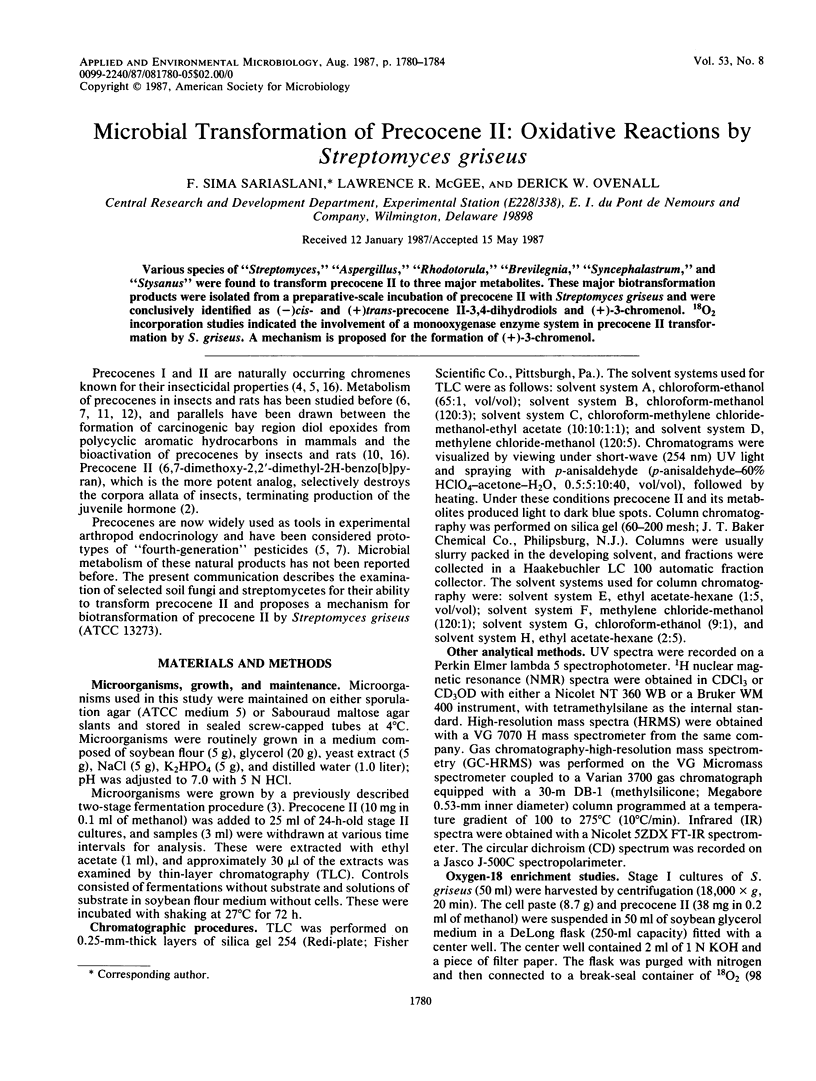
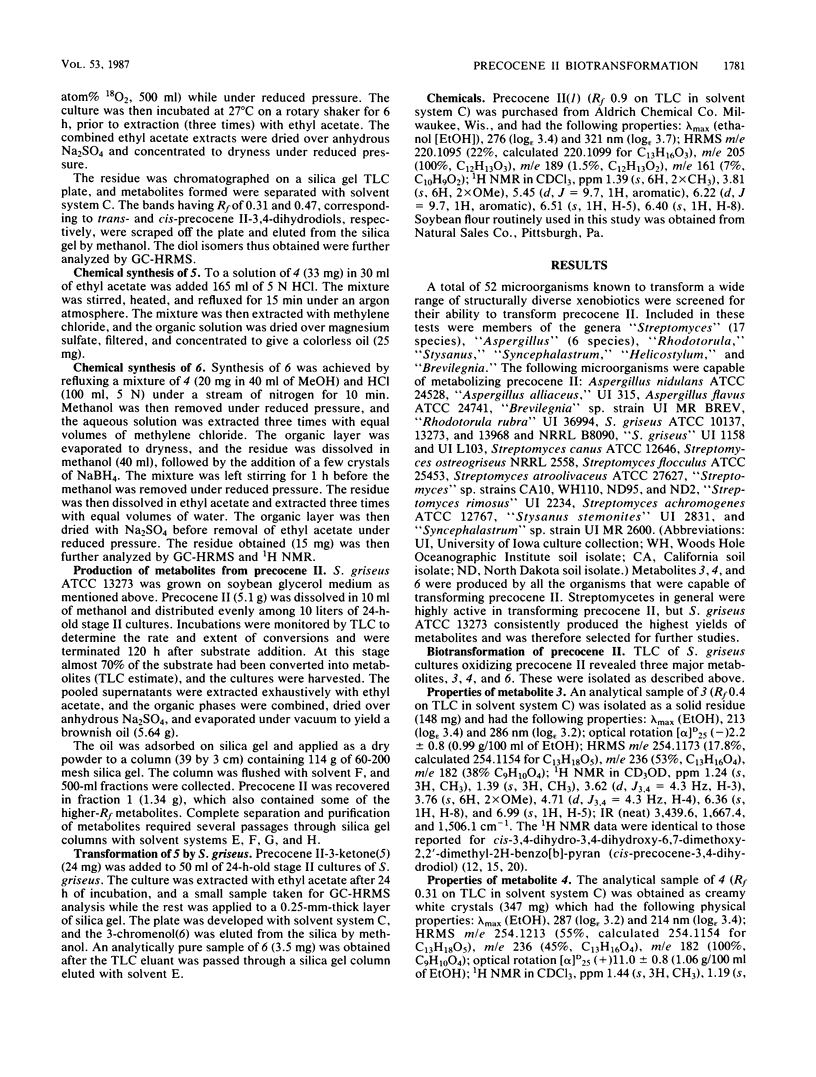
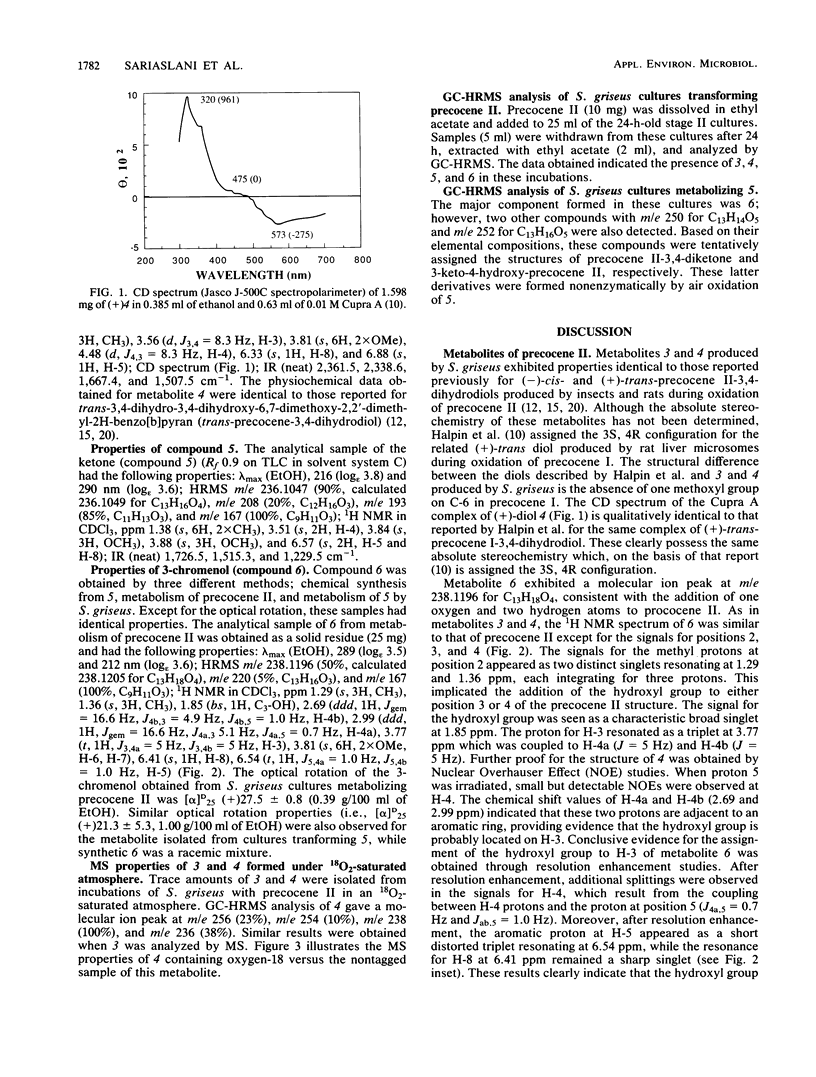
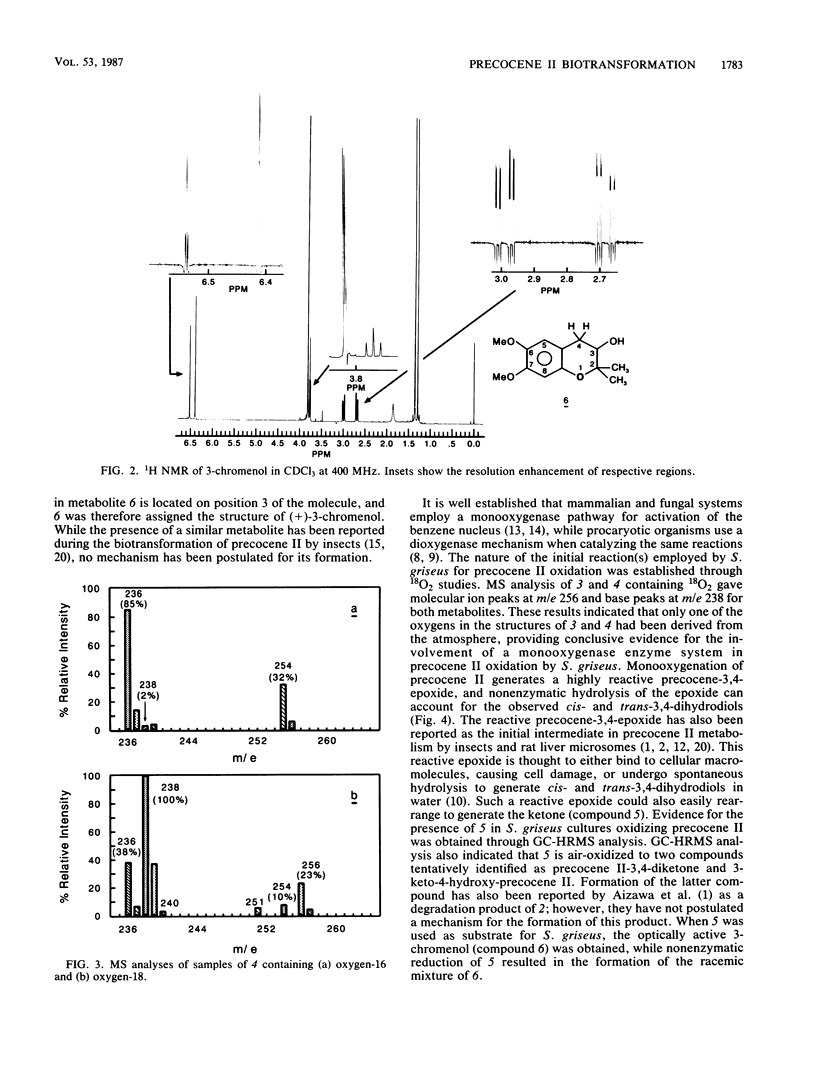
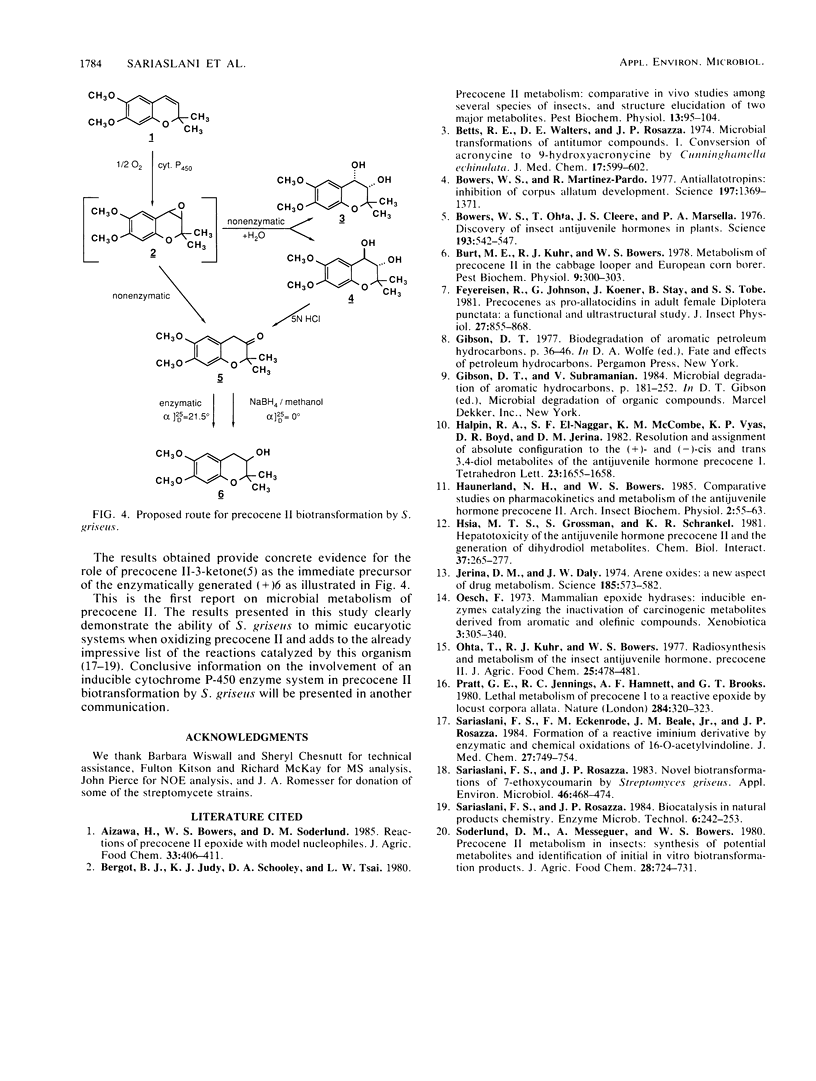
Selected References
These references are in PubMed. This may not be the complete list of references from this article.
- Betts R. E., Walters D. E., Rosazza J. P. Microbial transformations of antitumor compounds. 1. Conversion of acronycine to 9-hydroxyacronycine by Cunninghamella echinulata. J Med Chem. 1974 Jun;17(6):599–602. doi: 10.1021/jm00252a006. [DOI] [PubMed] [Google Scholar]
- Bowers W. S., Martinez-Pardo R. Antiallatotropins: inhibition of corpus allatum development. Science. 1977 Sep 30;197(4311):1369–1371. doi: 10.1126/science.197.4311.1369. [DOI] [PubMed] [Google Scholar]
- Bowers W. S., Ohta T., Cleere J. S., Marsella P. A. Discovery of insect anti-juvenile hormones in plants.?2U. Science. 1976 Aug 13;193(4253):542–547. doi: 10.1126/science.986685. [DOI] [PubMed] [Google Scholar]
- Hsia M. T., Grossman S., Schrankel K. R. Hepatotoxicity of the anti-juvenile hormone precocene II and the generation of dihydrodiol metabolites. Chem Biol Interact. 1981 Nov;37(3):265–277. doi: 10.1016/0009-2797(81)90113-7. [DOI] [PubMed] [Google Scholar]
- Jerina D. M., Daly J. W. Arene oxides: a new aspect of drug metabolism. Science. 1974 Aug 16;185(4151):573–582. doi: 10.1126/science.185.4151.573. [DOI] [PubMed] [Google Scholar]
- Oesch F. Mammalian epoxide hydrases: inducible enzymes catalysing the inactivation of carcinogenic and cytotoxic metabolites derived from aromatic and olefinic compounds. Xenobiotica. 1973 May;3(5):305–340. doi: 10.3109/00498257309151525. [DOI] [PubMed] [Google Scholar]
- Ohta T., Kuhr R. J., Bowers W. S. Radiosynthesis and metabolism of the insect antijuvenile hormone, precocene II. J Agric Food Chem. 1977 May-Jun;25(3):478–481. doi: 10.1021/jf60211a059. [DOI] [PubMed] [Google Scholar]
- Sariaslani F. S., Eckenrode F. M., Beale J. M., Jr, Rosazza J. P. Formation of a reactive iminium derivative by enzymatic and chemical oxidations of 16-O-acetylvindoline. J Med Chem. 1984 Jun;27(6):749–754. doi: 10.1021/jm00372a008. [DOI] [PubMed] [Google Scholar]
- Sariaslani F. S., Rosazza J. P. Novel Biotransformations of 7-Ethoxycoumarin by Streptomyces griseus. Appl Environ Microbiol. 1983 Aug;46(2):468–474. doi: 10.1128/aem.46.2.468-474.1983. [DOI] [PMC free article] [PubMed] [Google Scholar]


